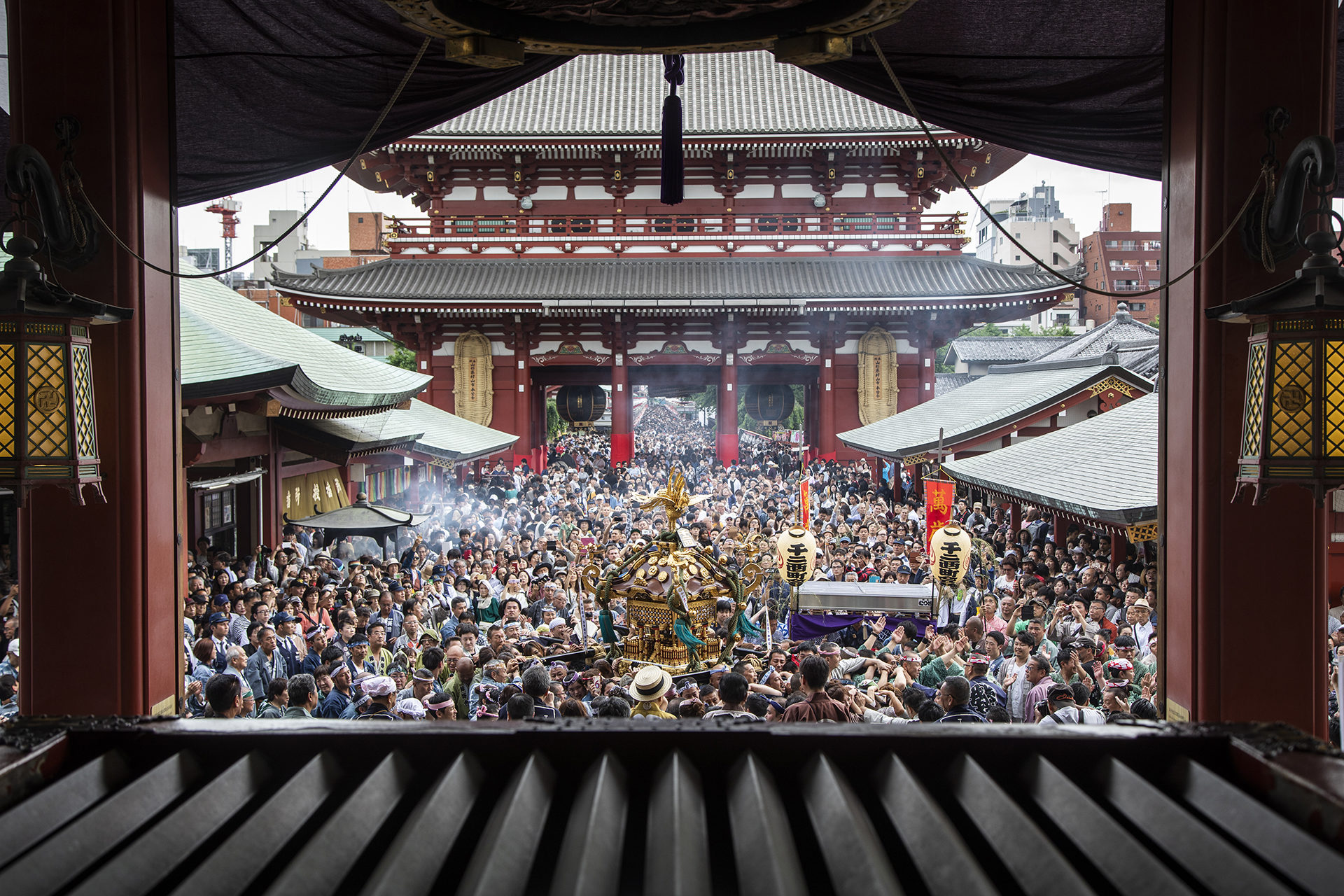Sanja Matsuri 2019
I spent this past weekend at the annual Sanja Matsuri festival in Tokyo – the first of the new era in Japan (Reiwa Era which commenced May 1st 2019). Sanja Matsuri is one of Tokyo’s biggest festivals and has been celebrated in East Tokyo for over 700 years in and around the neighborhoods of Asakusa. Groups of varying sizes come out to celebrate over a three day period, parading around the streets carrying mikoshi (portable shrines made of wood, coated in gold coloured metals), which are said to bring good fortune to local businesses and residents. A constant stream of music from taiko drums and wooden flutes rings out through the streets, adding to the already electric atmosphere!
All participants don traditional Japanese matsuri outfits, which are typically made up of lightweight jackets, known as happi, that are adorned with the symbol of the neighborhood they come from (usually the symbol of a local shrine, temple or organization) and white shorts. Footwear is usually a pair of jikatabi (traditionally worn by samurai and outdoor workers) – a type of lightweight boot that has a separate big toe, popular for festivals because they’re a traditional shoe that is affordable and comfortable.
You can also see people wearing other traditional clothes including yukata, jinbei and kimono. Half the fun at a matsuri is checking out the clothes of participants and spectators alike!
For the most part this event is a fun and safe day out for participants, families and spectators, although it is also known for its strong ties to local organised crime groups (known as yakuza) who have long had their HQ offices in and around the area. Factions of these groups take part in the event, occasionally allowing the public a rare glimpse of their members and also their trademark full body tattoos.
Generally tattoos in Japan are a taboo subject, due to a perceived image of them being “dangerous” because of their links to such groups, and are very much regarded as an underground sub-culture. It’s unusual for the general public to see tattoos on display in Japan, and many regular people here tend to shy away from even talking about them, which is a huge shame as the history of Japanese tattooing runs very deep and the skill involved in creating them is generally regarded among the best in the world.
Thanks to some personal connections I have, chatting with a few members from these groups in a respectful, open and honest manner allowed me to get some interesting photos of both the group members and their body art.
This is one side of Japan that you don’t see in the hundreds of travel guides that are popping up in an attempt to further stimulate the economy through tourism:
None of the images on this page can be used or re-shared without express permission from the author, and owner of this website. If you would like to share any of the images elsewhere please make contact via email here.
Sharing the URL to this page with full credit is ok. Thank you.





























